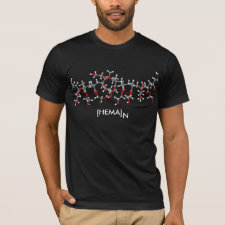
Authors: Edmiston PL, Campbell DP, Gottfried DS, Baughman J, Timmers MM
Article Title: Detection of vapor phase trinitrotoluene in the parts-per-trillion range using waveguide interferometry.
Publication date: 2010
Journal: Sensors and Actuators B: Chemical
Volume: 143
Issue: (2)
Page numbers: 574-582.
DOI: 10.1016/j.snb.2009.09.059
Alternative URL: http://www.sciencedirect.com/science/article/B6THH-4XG3S9B-1/2/85ce52524865a2414c106d3db07e09ed
Abstract: Waveguide interferometry was employed as a transduction scheme to create a highly sensitive detector for vapor phase TNT in air. Selectivity for TNT was accomplished by using molecularly imprinted sol-gel derived organic/inorganic films deposited on the surface of the waveguide sensing channel. Response varied greatly as a function of the sensing film composition and required the presence of a bridging structure possessing an aromatic group linking silicon centers. The most sensitive film was composed of bis(triethoxysilyl)benzene with binding sites for TNT prepared by the chemical removal of a covalently bound TNT template which was co-polymerized into the matrix. A continuous unidirectional phase shift was observed upon exposure to TNT which was only partially reversible. As a result, the limit-of-detection is a function of both vapor phase concentration and exposure time. Only 2.4 parts-per-trillion (volume) of TNT is required to reach a 0.5 degree phase angle change for 2�min exposure time using the optimized film composition. The sensor responds with much reduced sensitivity (<1000) to TNT structural analogues such as 2,4-DNT. The response to toluene is 6-orders of magnitude smaller than TNT, rapidly achieved equilibrium, and is completely reversible. Mass addition is insufficient to account for the magnitude of the interferometric response to TNT. The response mechanism is not clearly understood but may be due to reactions with amine groups in the imprinted binding pockets potentially coupled with anisotropic molecular organization of the sol-gel derived materials composed of bridging aromatic groups
Author keywords: sensor, Waveguide, Interferometry, Explosives detection



Join the Society for Molecular Imprinting

New items RSS feed
Sign-up for e-mail updates:
Choose between receiving an occasional newsletter or more frequent e-mail alerts.
Click here to go to the sign-up page.
Is your name elemental or peptidic? Enter your name and find out by clicking either of the buttons below!
Other products you may like:
 MIPdatabase
MIPdatabase









